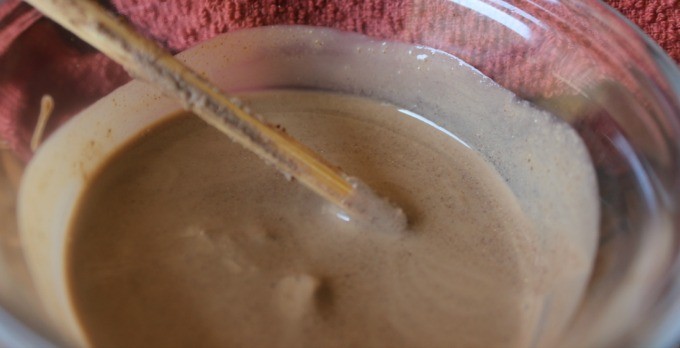Most of us have heard of the purifying qualities of charcoal, but have you heard of Binchotan Charcoal?
Binchotan charcoal hails from Japan and is derived from the Urame oak tree.
Skilled artisans transform raw wood into charcoal sticks by burning oak branches at extremely high temperatures (2300°F) and then rapidly smothering the flame with dirt. This process of heating and cooling carbonizes the structure of the wood, leaving countless microscopic cavities that easily trap unwanted chemicals. One gram of Binchotan charcoal has as much surface area as a tennis court.
(Excerpted from this description offered on Rikumo, a supplier of Binchotan charcoal.)
This makes Binchotan charcoal a highly purifying product with a myriad of uses. To prepare charcoal sticks for use, boil in water for 10 minutes, and allow to cool.
5 Uses for Binchotan Charcoal
1. Water filtration
Add 1/4 pound of sticks to a gallon of water and allow to sit for several hours. Replace water as you use it, keeping the sticks in the container. Refresh the charcoal sticks by boiling for 10 minutes. Replace sticks every three months. (See this one-minute video tutorial.)
2. Cooking
Add a couple of sticks to cooking water to enhance flavor and purify cooking water.
3. Bathing
Add 1/2 – 1 pound sticks to bathwater to help soothe sore muscles (due to the alkalizing effect on the water) and reduce chlorine and other chemicals. (I add a bit of vitamin C powder along with the sticks to help with chlorine, as vitamin C acts as a chlorine neutralizer.)
4. Household
Add 1-2 sticks to the refrigerator to absorb odors. You can also place sticks in cabinets to reduce dampness. Charcoal sticks may also be placed in basements to help with moisture issues.
5. Electromagnetic Field Protection
Place Binchotan charcoal sticks near radiation emitting devices to reduce electromagnetic exposure. The charcoal dissipates EM waves utilizing “bounce” within cavities or pores.
5. Garden
Recycle your used charcoal sticks by placing broken pieces in the soil. The charcoal will increase air flow and help increase microbial activity while alkalizing the soil.
Where to buy Binchotan charcoal:
Rikumo offers some other Binchotan charcoal products including an eye mask, body scrub, and pumice stone. See them here.
Have you tried Binchotan charcoal? How have you used it?
Related Posts
- 51
- 50
 Borax is frequently used in homemade laundry soap, dishwashing powders, and personal care products. The question often arises: Is borax safe to use? Borax, also known as sodium borate, sodium tetraborate, or disodium tetraborate, is a naturally occurring mineral composed of sodium, boron, oxygen, and water. (The scientific name…
Borax is frequently used in homemade laundry soap, dishwashing powders, and personal care products. The question often arises: Is borax safe to use? Borax, also known as sodium borate, sodium tetraborate, or disodium tetraborate, is a naturally occurring mineral composed of sodium, boron, oxygen, and water. (The scientific name… - 37
 Altering our lifestyle to integrate non-toxic products has been a slow process. It took at least a year to incorporate fragrance-free and chemical-free items into all areas of life, including laundry, kitchen, and personal hygiene. It's been trial-and-error with grooming products. When our reactivity was at its height, I found…
Altering our lifestyle to integrate non-toxic products has been a slow process. It took at least a year to incorporate fragrance-free and chemical-free items into all areas of life, including laundry, kitchen, and personal hygiene. It's been trial-and-error with grooming products. When our reactivity was at its height, I found… - 37
- 37
 Looking for reasons to cut out chemicals when you clean? Consider these points offered in the article Green Cleaning vs. Conventional Cleaning: • Manufacturers of conventional household cleaners are not required by law to disclose the noxious ingredients in their products. • Do not be fooled by the words "non-toxic"…
Looking for reasons to cut out chemicals when you clean? Consider these points offered in the article Green Cleaning vs. Conventional Cleaning: • Manufacturers of conventional household cleaners are not required by law to disclose the noxious ingredients in their products. • Do not be fooled by the words "non-toxic"…









Hi Andrea! I was looking for the charcoal sponges on Just So but don’t see them right now. If I buy them somewhere else for now, does it matter what brand I buy? Thank you. Deb
Thank you!
I know this post is a few years old but I’ve been trying to figure out how much Binchotan to use in the gallon-sized water jug I have. Everywhere they just show people using it in small water bottles! Now I know how much I need for my family’s daily drinking water source. Thank you!
So glad this helped! Thanks for sharing.